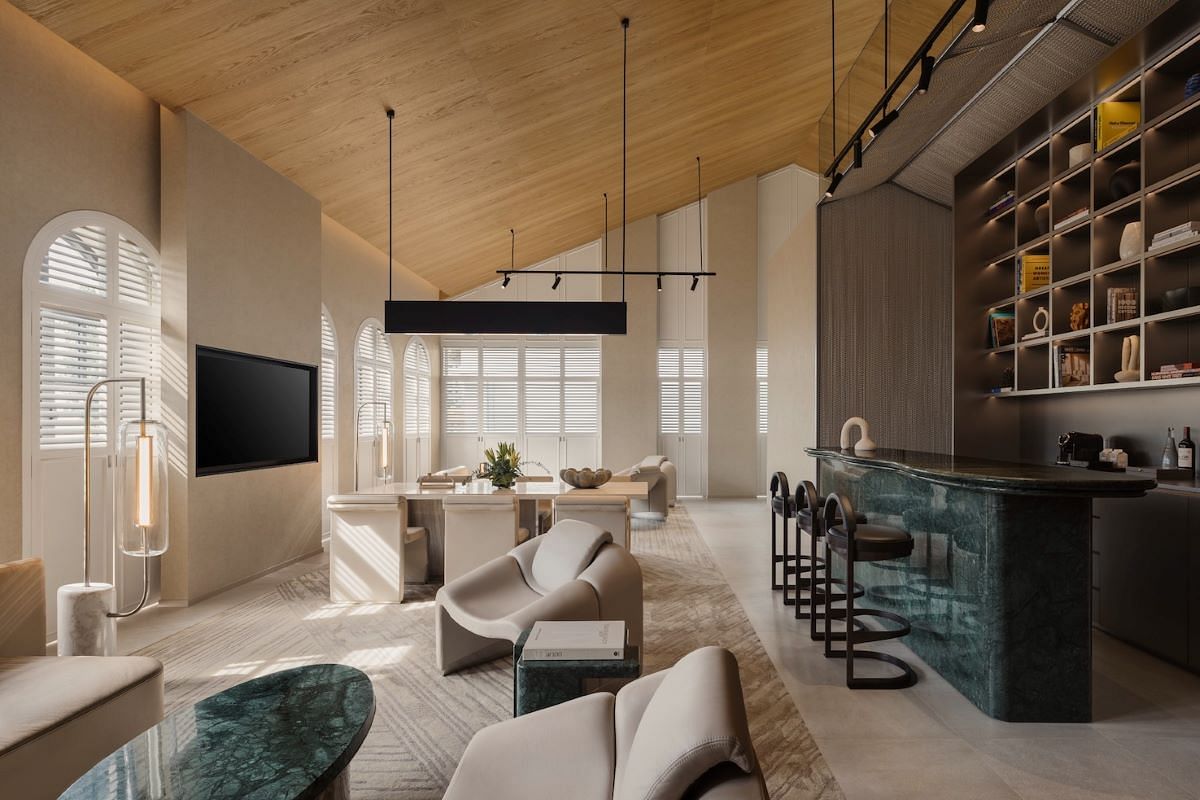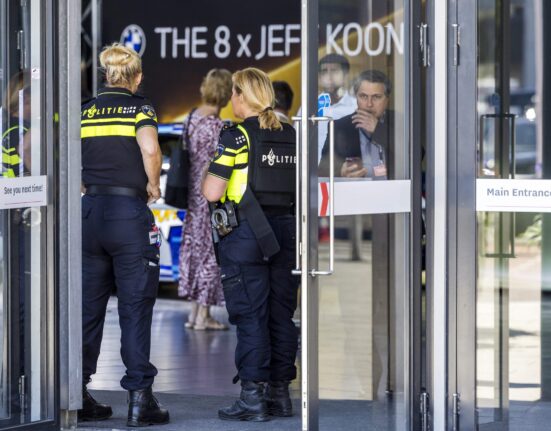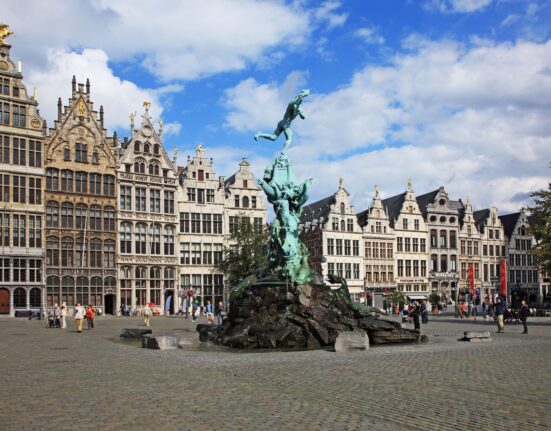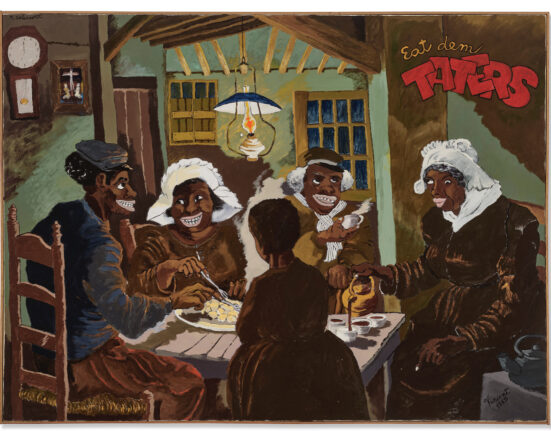Art is often cited by designers as a source of inspiration, but for interior specialist Robbyn Carter, she has taken this to the next level. Walk into any of her projects around the world, and it feels like you have entered a sculpture.
Whether it is the Kimpton Shanghai or the Fairmont Maldives — and most recently, the Mondrian Duxton Singapore — each of the spaces is a creative composition of forms, colours, and materials.
Related: House Tour: The design of this Orchard Road apartment is inspired by its stunning views
This is certainly no coincidence. Carter, who runs her eponymous studio headquartered in California in the United States, did in fact begin her career as a sculptor through an apprenticeship with artist Albert Guibara in San Francisco.
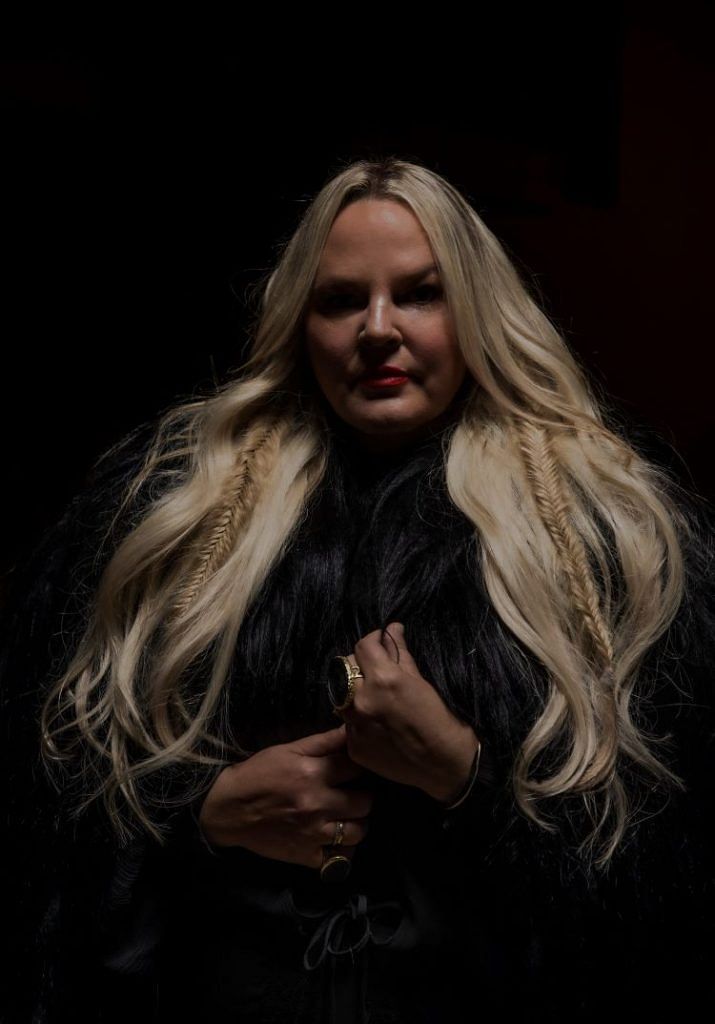
By night, as “starving artists often do”, according to her, she took a second job in hospitality to supplement her income. “It was really while working in these environments that I realised the similarities between space and sculpture,” she says in a Zoom interview with The Peak.
While pursuing a degree in environmental design from the Arts Center College of Design in Pasadena, she started to develop a skill that now sees her working at the intersection where fine art meets interior architecture, with a focus on hospitality. Since then, she has had the chance to practise in diverse destinations across the US, Europe, and Asia.
“My design philosophy is really rooted in the values of artistic expression. Being an artist at heart, I like to think of spaces more sculpturally and compositionally — the idea that someone could walk through my project and really have a unique and immersive experience,” she explains.
Personal touch
The latter, especially, is something she greatly values. To achieve it, she prioritises designing everything in her projects as far as possible, as opposed to picking things out from a catalogue: “What it does is it creates this custom look. We do this to set ourselves apart.”
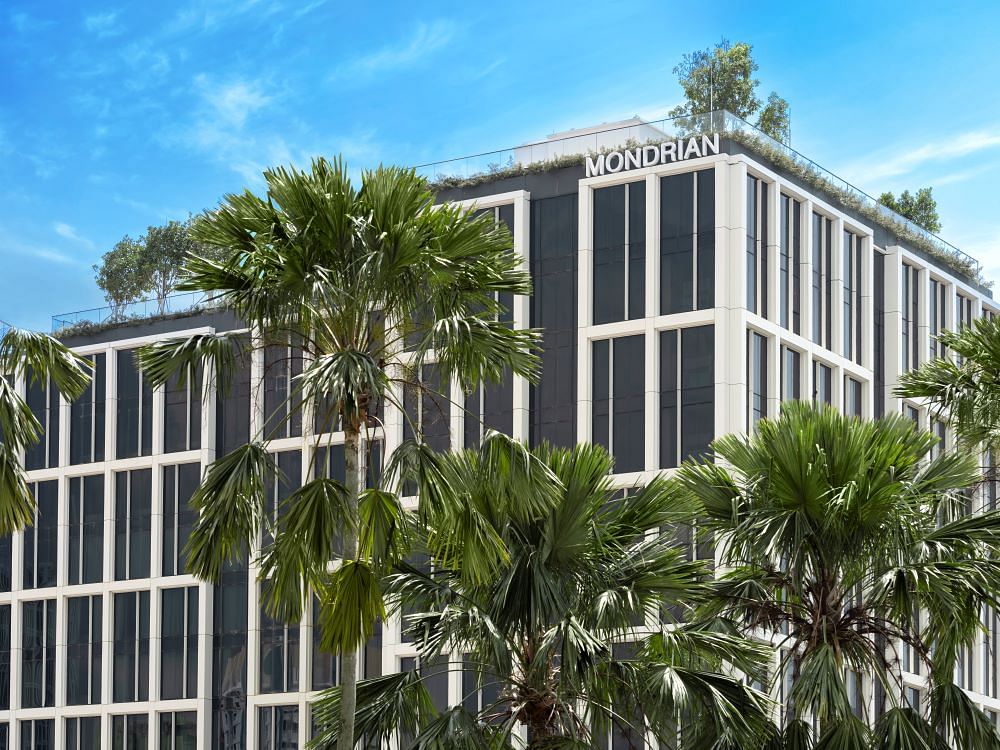
It also means she is deeply involved in every project, which is important to her. “I see everything — every single design line, brushstroke, gesture, big concept I approve. It doesn’t go out to the client unless I see it and approve it first,” she explains.
Referencing Mondrian Duxton Singapore, Carter shares how she birthed the concept of a deconstructed shophouse for its design. Having previously lived in Singapore for six years in such a building along Niven Road, she was intimately acquainted with the typology. The hotel’s location, set smack in the middle of a large cluster of them, also made it the natural starting point.
“This was the one gesture that brought a holistic thread through each space. We used contemporary interpretations where we respected the original details but transformed them into more sculptural forms.”
Related: Age reversal centre Chi Longevity optimises life quality by treating ageing as a disease
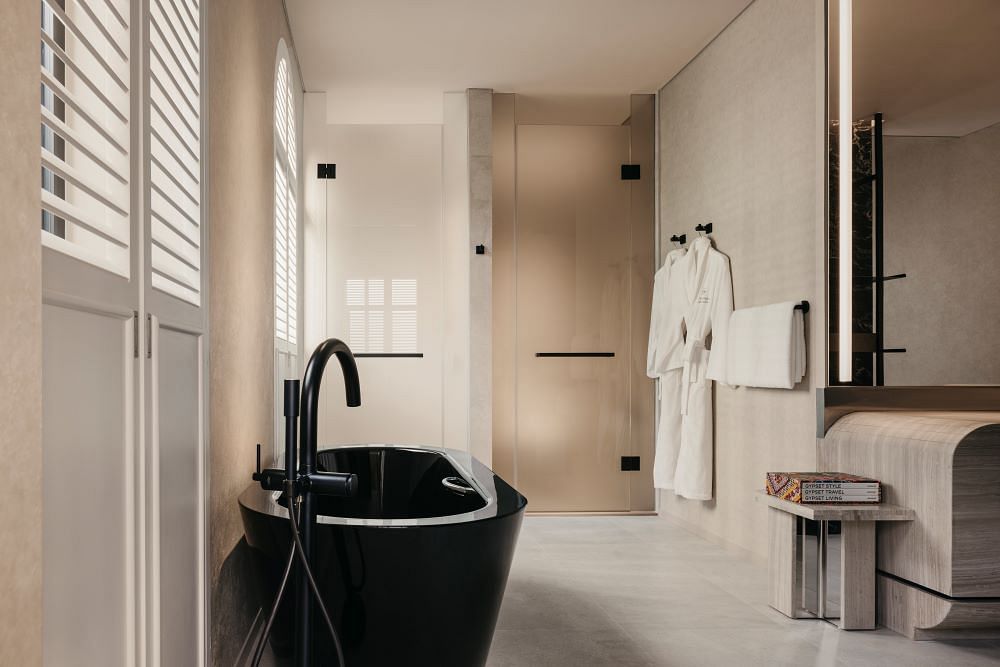
For instance, each of the Shophouse Suites has arched wooden shutters and vaulted ceilings. Shutters are also used to surround the lift doors, albeit in a contemporary manner.
Also contributing to the unique experience is the bold graphic artwork on the ceiling of the restaurant Bottega di Carna, which can also be found in the rooms. For this, Carter worked with an artist to evoke the feeling of being immersed in an artwork.
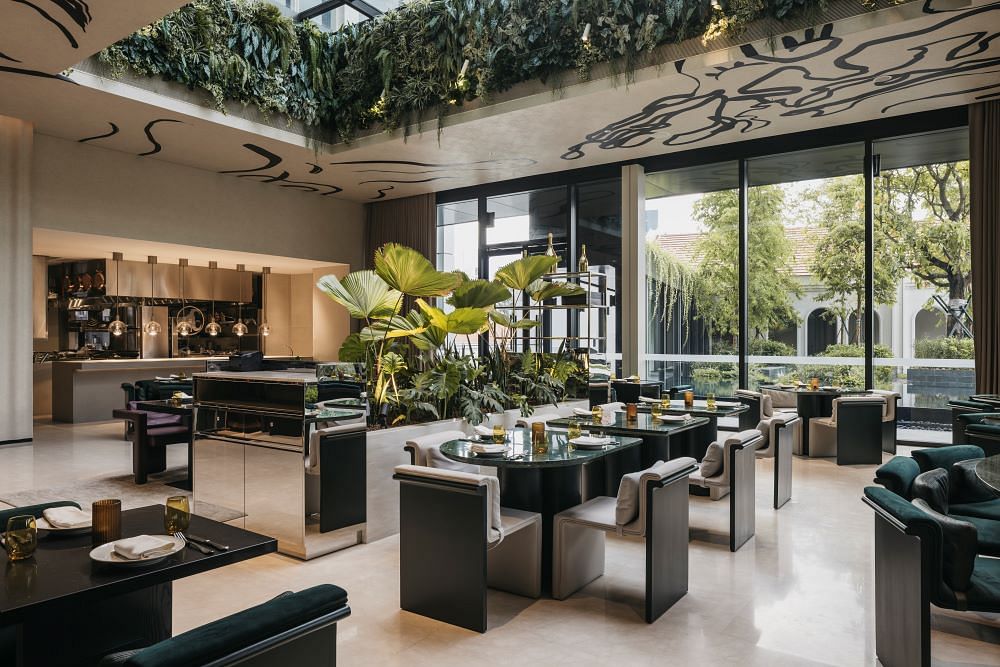
Thick black lines inspired by the medium of Chinese ink wind and curve in what seems at first to be a random manner. In fact, the design incorporates distinctly Singaporean elements like the flora and fauna and even the beloved otters.
Makers and materials
Carter’s insistence on going the bespoke route has a deeper purpose too. It gives her the opportunity to support local and regional craftspeople and “set them up for success”, as she puts it.
Whenever she lands a project in a new location, she takes time to learn about the manufacturers in the area, visiting their ateliers or factories and having multiple dialogues with them. Not only does this ensure their financial sustainability, but it also introduces local flair into the property she is designing.
Another advantage: It is more climate friendly. “We know where the wood is coming from; we know where the leather is coming from. We can specify environmentally friendly materials versus purchasing items and having no idea where they come from,” she points out.
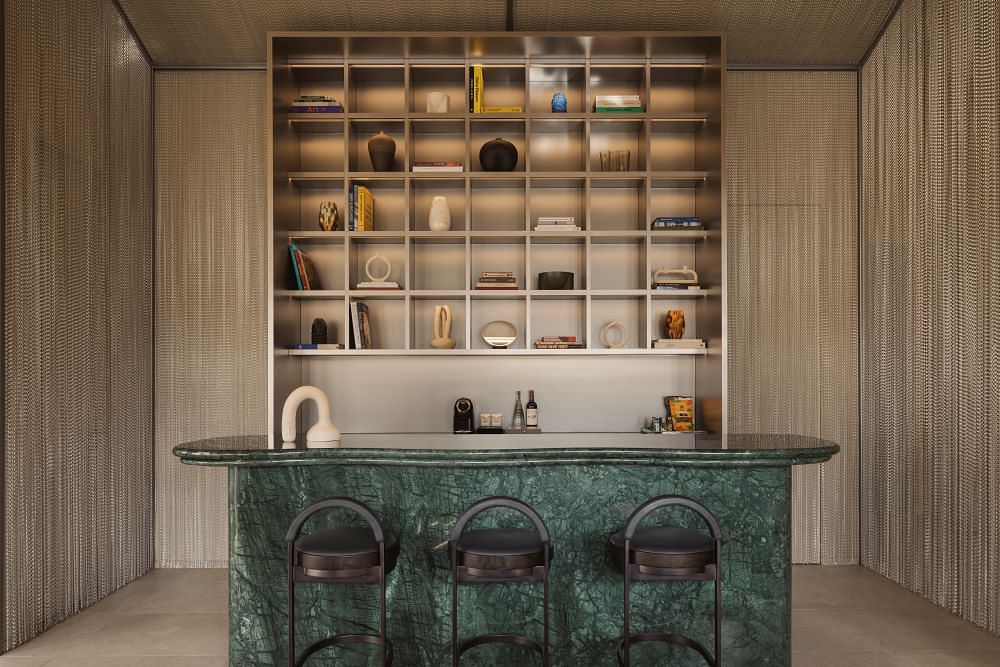
It therefore does not come as a surprise that when asked what is inspiring her at the moment, she immediately says “eco-friendly materials” without missing a beat. Through her office in Madrid, Spain, she is exposed to the artists who create them.
There is one who takes paper pulp from FedEx boxes and turns it into sculptures. Another makes tiles out of egg shells. A third is using sustainable lava stone with a beautiful glazing. “They’re a little more expensive because they’re not mass produced, but we use them as accent pieces,” she adds.
“We’re developing this really nice library of materials based on a lot of creative European designers who are really evolving and creating some beautiful materials, which we can use on projects.”
Related: This holistic resort in the desert of Qatar is an oasis of well-being
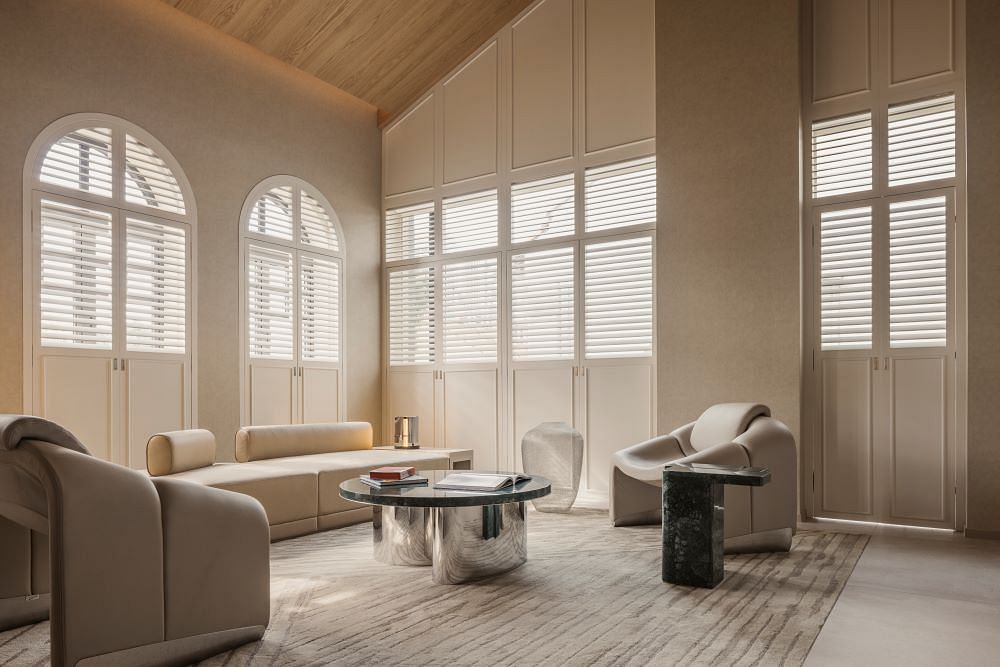
In having to juggle multiple projects around the world, Carter has understandably had less time to personally create any art herself. When she actually does, though, she considers it “a luxury”.
“There’s something about digging your hand in the clay or bending metal to actually make something with your hands. I love it so much that I’m always like, when I retire, I’m going to go back to being a sculptor. It’s my dream.”


